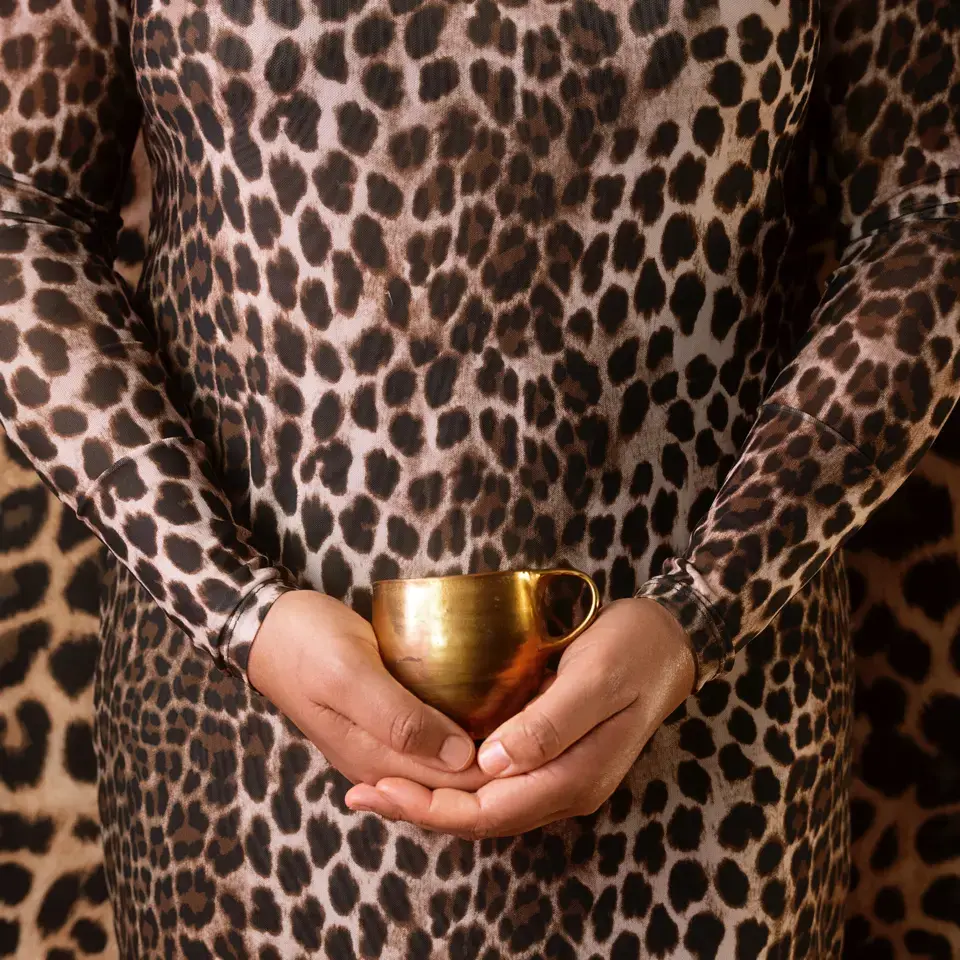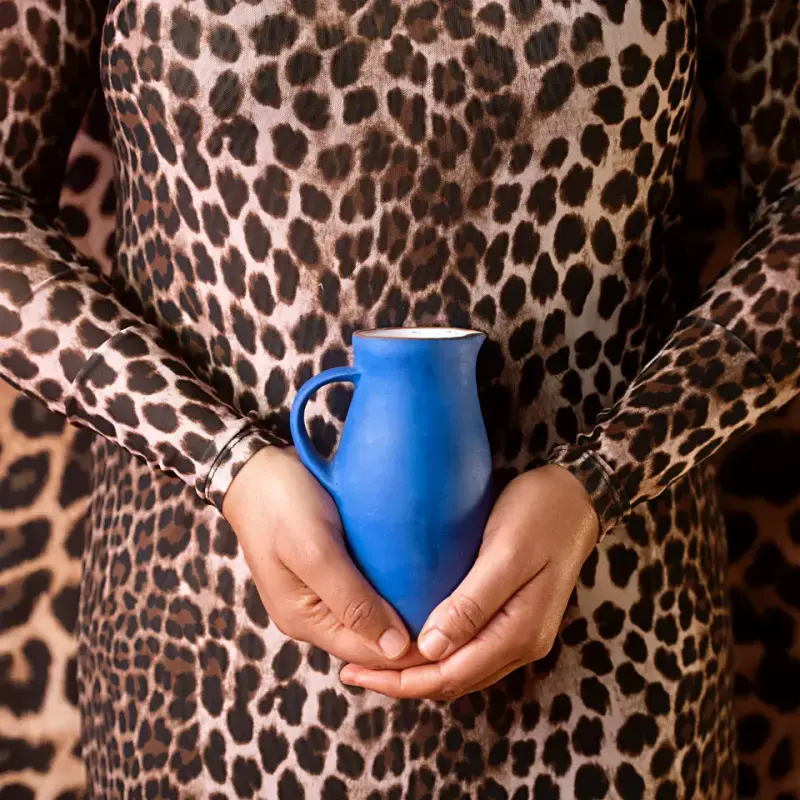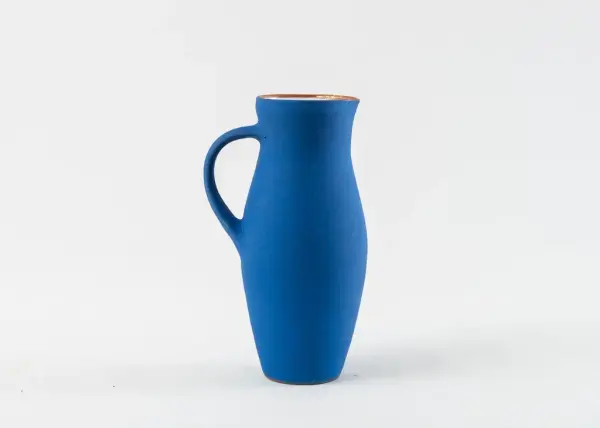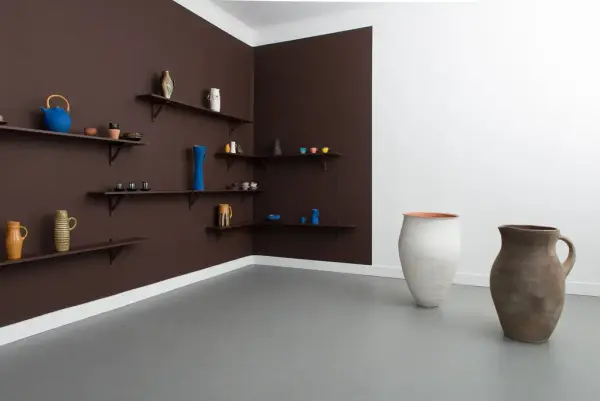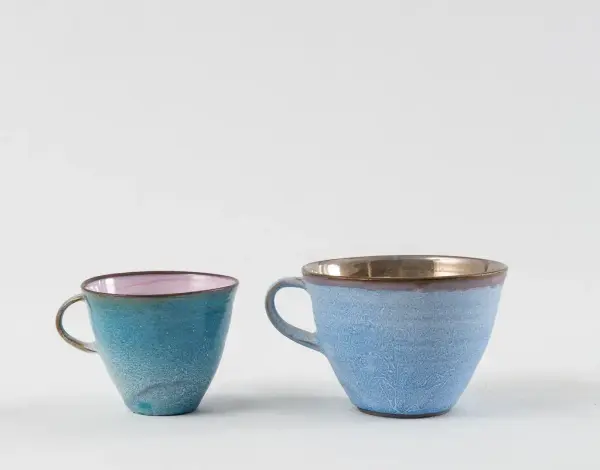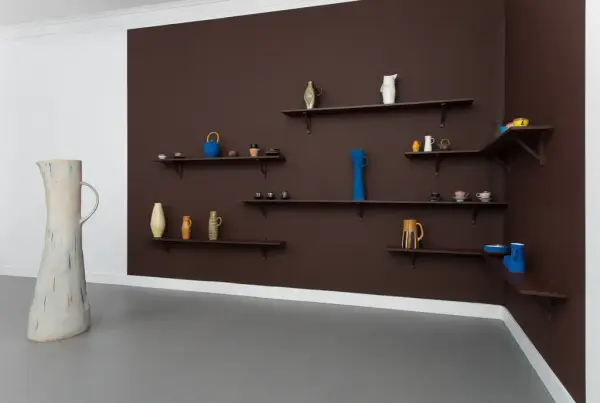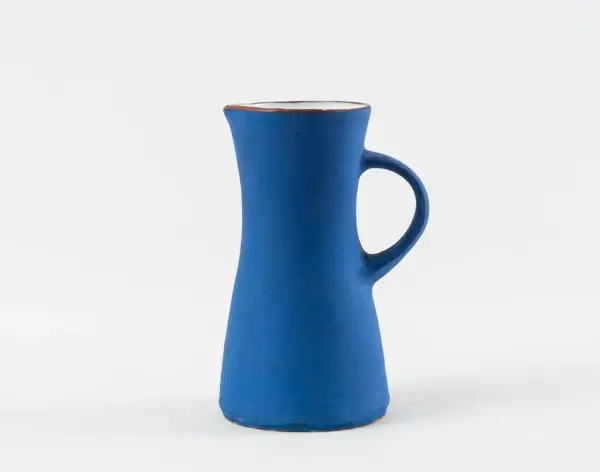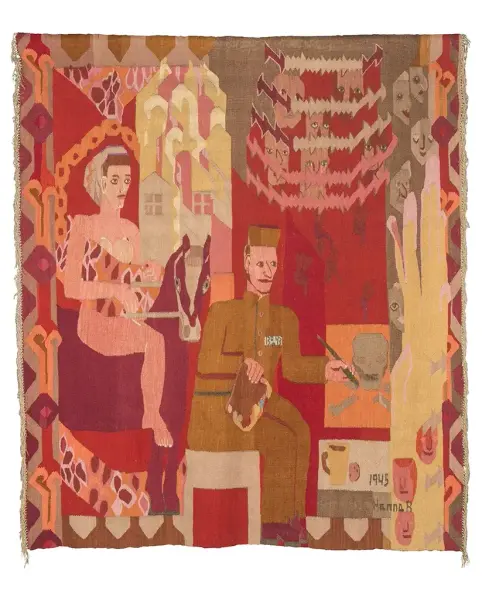Lisbet Dæhlin
untitled (golden cup), early nineties
glazed earthenware
From the collection of Maritea Dæhlin
Lisbet Dæhlin (1922–2012) was a pioneering ceramic artist whose work merged functionality with artistic vision. Born in Denmark, Dæhlin trained at the School of Arts and Crafts in Copenhagen, before settling in Norway. She became a central figure in the artistic community at Frysja in Oslo, where she worked alongside other ceramicists and crafts artists. Her studio became a place of creative exchange with younger colleagues, such as Karen Klim, Beth Wyller, Lillian Magnus, Anne Hansen and Jannicke Heierdahl-Larsen.
According to her colleague Nina Malterud, Lisbet practiced “living traditions,” encouraging renewal, experimentation and adaptability, thus bringing tradition into the contemporary world[1]. The artist was concerned with the great potential of form: Dæhlin’s bowls, plates and jars were not just vessels but expressions of a philosophy in which beauty and function were inseparable. She believed in the intimate relationship between objects and daily rituals, for instance the shared experience of a meal. Dæhlin encouraged the use of handcrafted pieces in everyday life, challenging the tendency to relegate craft to decorative display. Her work often involved a quiet modernism, favoring simple, elemental shapes with subtle imperfections that spoke to the human hand in their making. Her signature blue jar that is part of the permanent collection exhibition on the first floor, for instance, stands as a complete and independent artistic statement, an object of both contemplation and utility.
Dæhlin has been described by her colleagues as both quiet and modest, but also brave and strict. She was groundbreaking in that she employed a strong blue, matt glaze and increased the size of the object, moving towards the sculptural. She also took up the idea of adding luster, gold, onto cups and vessels, which wasn’t fashionable at the time. Dæhlin herself said of her rebellious “gold” period: “I grew up with the pure form of the 40s and 50s, and an architectural style where decoration and flowers were inexorably stripped away. That’s still my style. But sometimes I break with the purist in me and use gold on the edge of the cup.”[2] One of those golden cups, used daily by her granddaughter, artist Maritea Dæhlin, for a morning coffee, will become a sculpture for the exhibition period.
Dæhlin was deeply aware of patriarchal and other organizing structures that shaped her career. She was 51 when she received her first working grant in 1973, an event that not only provided financial stability but also validated her role as a professional artist. Lisbet spoke openly about the significance of financial independence and the shifting gender roles she observed among her younger colleagues. Throughout her career, Dæhlin was a central part of the Norwegian crafts community. She was involved in the establishment of the artist-run outlet Gabelsgate in Oslo, an important forum, not least for experimenting with the dissemination of arts and crafts.
Later in life she exhibited widely, gaining recognition for her ability to imbue simple, functional objects with a profound sense of presence. Placing her large pots directly on the floor instead of on pedestals in order to emphasize their earthy and tactile qualities challenged the traditional forms of display at the time. She saw her ceramics as conduits for connection — between people, between hands and materials, between art and life.
Questions around not touching or using the objects, in an exhibition context, were never an issue for Dæhlin. She accepted that museums and galleries placed restrictions on touch, but she knew that her objects could be used and appreciated in other contexts. For her, strength of craftsmanship was about precisely this duality: a jug could be an art object, but also a thing that was a part of people’s lives. Her legacy lives on through her works, perhaps even more in people’s kitchens than in museum displays. Everyday objects created by Dæhlin transcend their utilitarian purpose, inviting an awareness of form, touch, and presence experienced over a daily meal.
- Marianne Zamecznik
[1] Nina Malterud, “Lisbet Dæhlin” in Kunsthåndverk 3, 2003, p.18–19.
[2] Lisbet Dæhlin, “Exciting art — with and without gold,” interview with Reidar Storaas, in Bergens Tidende, 29 August 1987
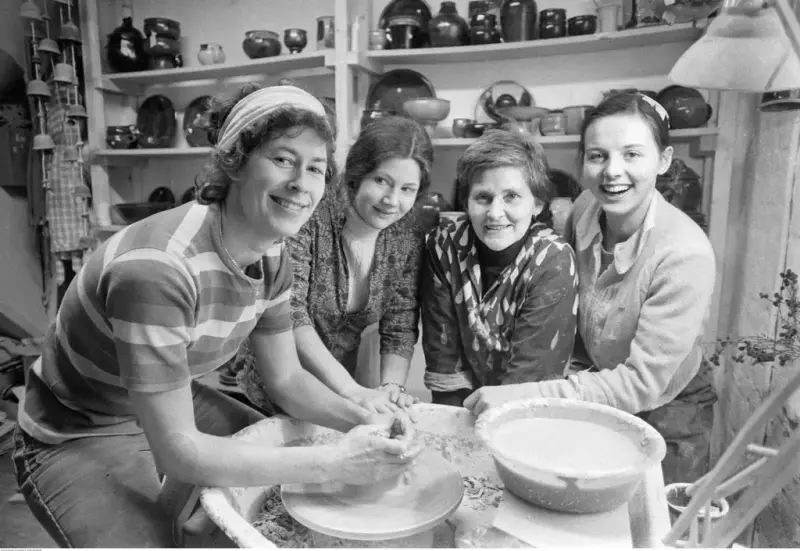
Lisbet Dæhlin at her studio in Frysja Art Center. From left to right: Lillian Magnus, Anne Hansen, Lisbet Dæhlin og Jannicke Heierdahl-Larsen. February 1975. Courtesy Arbeiderbladet/The Norwegian Labor Movement Archives and Library
Lisbet Dæhlin (she/her, b.1922, Nymindegab – 2012, Oslo) was an artist/ceramicist who had a great impact on the Norwegian arts and crafts community. She was a driving force for the recognition of ceramics as an art form. On the one hand, Dæhlin’s artistry transformed everyday objects, such as jugs and teapots, into sculptural objects and, on the other, insisting on creating applied forms, she argued for functionality within the arts. Lisbet was educated at the School of Arts and Crafts in Copenhagen and at various ceramics workshops internationally. In 1948, the artist moved from Denmark to Norway. She had her first solo exhibition, together with sculptor Svein Visted, at Galleri Per in 1950. It was the first solo exhibition of ceramics after the war and was the first time that ceramics were exhibited in an art gallery in Norway. Lisbet’s second solo exhibition took place 23 years later, and her final solo show was at Kunstnerforbundet, Oslo, in 2018. Dæhlin’s works are represented in various museums and collections throughout Norway as well as abroad, including: the Cooper-Hewitt Museum, New York; Nasjonalmuseet, Oslo; and the Victoria and Albert Museum, London. Her signature jars adorn several buildings in Norway, as well as the Norwegian Embassy in Berlin. For more than 30 years, Dæhlin had a workshop at Frysja Kunstnersenter. She lived and worked in Oslo until she died in 2012.
Production credits
Lisbet Dæhlin, untitled (golden cup), glazed earthenware, early nineties
From the collection of Maritea Dæhlin.
Podcast
Listen to Maritea Dæhlin speak about her grandmother, artist Lisbet Dæhlin's artistic practice and the work featured in the exhibition Passing Motherhood.
Language: English
- 1/1
Duration: 5 min 20 sec.
